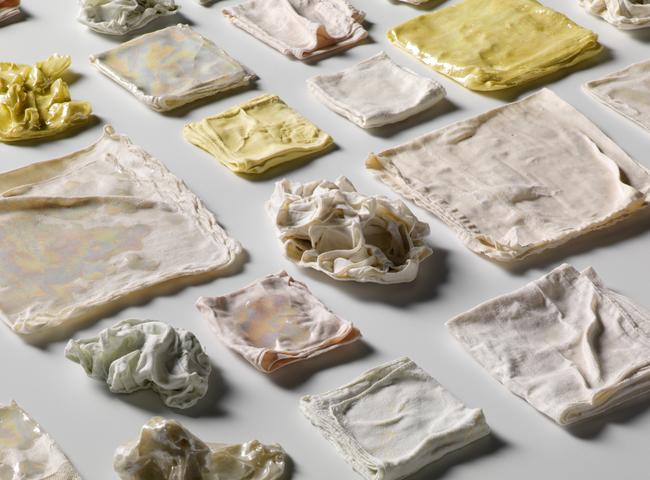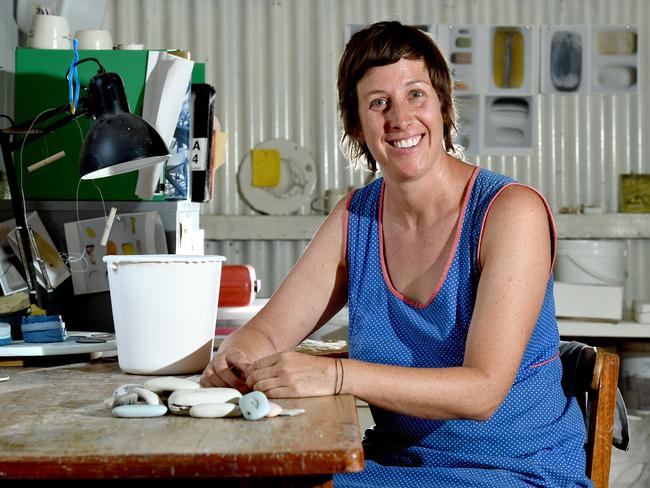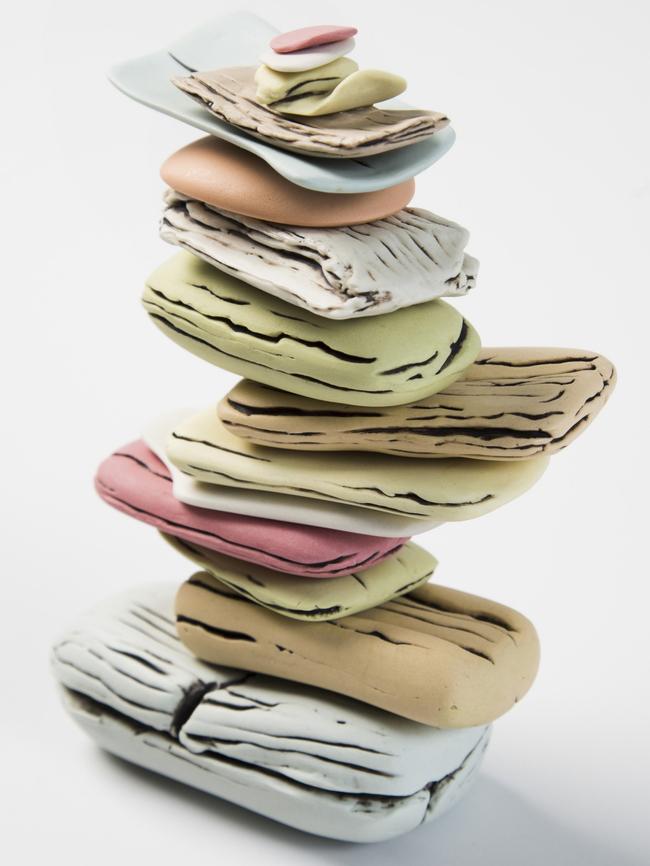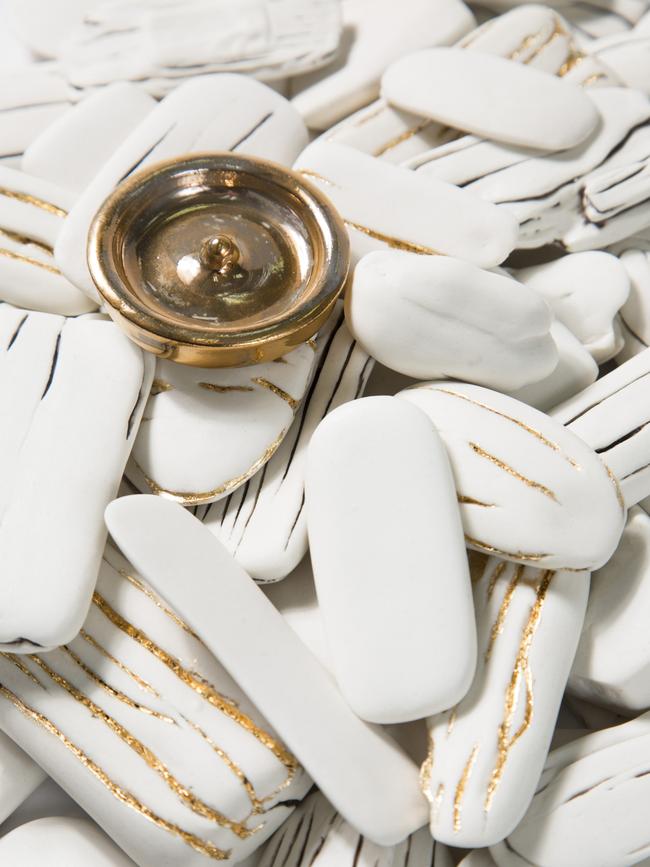Honor Freeman exhibition captures spirits in the material world
Memory and mourning is captured in the porcelain “ghosts” of everyday objects in Honor Freeman’s new exhibition.
- Nathan Modra’s SALA scrap art is off the rails
- Band born of brotherly love plays Barossa and beyond
- Virtual Reality brings Venice to SALA Festival
Soap, sponges, buckets and towels surround ceramist Honor Freeman in her Beverley studio shed, but these are not materials for cleaning up after her work … they are the subjects of her art.
Along with delicate handkerchiefs – some neatly folded, others crumpled with the residue of spilt emotions – these seemingly utilitarian items have been meticulously slip cast in porcelain, their ephemeral nature forever preserved and elevated in status.
In Ghost Objects, at the Art Gallery of South Australia from today as part of August’s SALA Festival, Freeman reimagines these items as vessels of memory and mourning.

“Slip casting is traditionally an industrial process, used to create a great number of objects,” she explains.
“Essentially, you make a plaster mould of an object – plaster is a very ‘thirsty’ material, so it ‘drinks’ the water out of the liquid slip.
“You fill the cavity with porcelain, the plaster drinks away the excess liquid, and what you get left in there is a skin which is a remembering, of sorts, of the object … like a ghost.”
The exhibition is the result of Freeman’s residency as part of a collaboration with craft body Guildhouse called The Collection Project, which gives an artist the opportunity to research permanent collections at the Art Gallery, Flinders University Art Museum or Botanic Gardens.
“My way into the collection was looking at the unknown makers – the people who are invisible. Over time, lots of ceramics have been made but we are unaware of the maker,” she says.

Roman glass flasks which were found in tombs, and originally thought to have held tears of mourning, inspired her porcelain buckets.
“I was also exploring my own stories of grief or sadness and loss … so I began exploring the objects that we use for ritual or mourning.
“The buckets came about when I was thinking of those tear vessels – apparently you will cry, in your lifetime, 61.5 litres of tears, on average.
“I’m not necessarily interested in a number, but in measuring a life by ‘all the tears I cried’ or that Bob Dylan song, Buckets of Rain.”

Freeman graduated with Honours from the SA School of Art in 2001, then became an associate at the JamFactory and has since undertaken residences in Denmark, the US and Chile. Her work is now represented in Australian private and state collections as well as that of Washington DC’s National Museum of Women in the Arts.
In her practice, Freeman explores everyday objects and the theme of mimicry. Based on an estimation that one person will use 656 bars of soap in their lifetime, she initially explored mortality with her installation Soap Score at the JamFactory in 2016.


“My dad, he died quite early on in this project, and my mum gave me his last bar of soap … it was also this point of pausing, about this object that is with us at our most intimate.”
Another of Freeman’s works, Soap Scale – which features a slip cast sponge, hand towel and cracked remnants of soap bars in graduated shades of terracotta pink – is among the finalists in The Advertiser Contemporary Art Award, on show at 31 Waymouth St, city, until the end of August.
Every pore and fibre has been recreated in such detail that the items look as if they could still be unfolded, squeezed or used to soak up fluids.
Pigments are added to the liquid slip so that they permeate the entire object, rather than being applied to the surface.
After they are removed from the mould, Freeman says the porcelain objects can be “quite gnarly looking” and often require “painstaking cleaning up”.
“At various stages along the way, the works are hand-sanded and the ‘grime’ is put into the soap bars. In the work for the gallery, I’ve actually filled the crevices of the soap with gold, exploring the idea of repair like traditional Japanese Kintsugi.”

In Kintsugi, broken pottery is mended using lacquer mixed with powdered gold, silver or platinum, so that the breakage and repair become part of the object’s history, rather than something to be disguised.
“In the making of the piece, there’s a reversal of state … soap is always disappearing. The artwork goes from liquid to solid, as opposed to soap itself, which goes from solid to nothing.
“Kintsugi is this really lovely Japanese way of giving an object metaphorical rebirth … it is cherished so much that it is repaired with gold, so it’s original state and it’s new state are all held together in one.”
Honor Freeman: Ghost Objects is at the Art Gallery of SA until September 29.
